Do Dental braces hurt?
It’s a common question when youngsters and adults find they need this type of orthodontic treatment. It’s simple to answer and one that can make the difference between having the procedure done or avoiding it completely which could potentially lead to further oral health problems down the line.
Many people from teenagers to adults find that at some stage, they’ll need a brace fitting to help straighten crooked teeth, or to simply help them feel more confident and reassured about their smile! Whether you’re having braces as part of routine procedure or as part of a programme of cosmetic dental improvement it can help to understand how the procedure works.
Take a look at our Dental orthodontic options here
In recent years, the technology for measuring, making and fitting braces to those in need of them has improved greatly. The introduction of innovations such as Fast Braces, that can help straighten and improve teeth quicker are worth considering and can shorten treatment time by up to nine months. It’s worth talking to a private Dentist about this, if your child, or indeed yourself need a brace.
With better technique also comes improvements in patience, care and understanding for those people who might find they scared of visiting the Dentist for regular treatment and procedures. Aesthetika is a Kingston Dentist that has a Dental Phobia certified Dentist who is available for appointments on request.
Having braces fitted need not be an ordeal, or something to be frightened of if you read our guide to understanding how the fitting process works and what to expect.
Does Having a Brace Fitted Cause Discomfort?
At an initial consultation your Dentist will take a good look at your teeth. They might want to take x-rays of both these, and your jaw too. These are completely pain free and shouldn’t cause any discomfort. The important thing to remember is to keep still and follow the instructions of your Dentist.
1. Taking impressions
Impressions of your teeth might need to be taken. This is done by creating a mould with a putty like substance known as alginate. A tray, constructed of plastic will be filled with this soft, pliable material and then carefully placed over your teeth, one jaw at a time.
This should be completely pain free and will take about thirty seconds to set. Whilst there is no pain, it’s fair to say some patients do worry about feeling uncomfortable in such a situation and feel scared in case they gag. Try to relax and remember to breathe slowly and deeply through your nose. If you know you have a higher gag reflex, talk to your Dentist and Dental Nurse and they’ll do everything they can to make you feel as safe as possible.
2. Fitting the braces
Once your impressions have been taken and your private Dentist has discussed the type of brace you need, the braces will be constructed and a further appointment to have them fitted will be made. This will be a simple, short process in which we fit the brace and then discuss (if applicable) how to insert and remove any aligners to make sure they fit comfortably and correctly.
An appointment to have a fixed brace fitted will take slightly longer but is also very straightforward too. A special cement will be mixed and used to properly affix the brackets of the braces to your teeth. Once it is in place a blue light will be used to set them and prevent them from coming off. The brackets will then be joined using a metal wire. Depending on the type of fixed brace you’re having, it will be held in place with clips or elastic bands.
3. Appointment aftercare
Once you leave the treatment room you might possibly experience a period of a few hours in which your teeth start to ache, or where the inside of your mouth and particularly your cheeks feel a little sore.
These symptoms are perfectly normal and should not cause too much discomfort. Yes, they’re unwelcome, but there is no real need to worry. How long you might feel discomfort for can vary person to person, some may only feel it for a few hours, whilst others may notice it for a couple of days.
4. Treating discomfort
If you do find that you’re suffering with aching and discomfort, then simple painkillers that you might take to relieve a headache will help with brace pain first day.
Salt water rinses can also help to soothe and comfort sore gums and the inside of the mouth. Simply put a teaspoon full of salt into a glass of freshly boiled water. Allow to cool sufficiently, then gargle with it and spit out.
Remember to follow any advice given to you by your Dentist with regards to dental hygiene, brushing, cleaning and using mouthwash.
5. Adjusting braces
From time to time follow up appointments are required to have your braces adjusted (if they are fixed) or to have new sets of aligners fitted. Again, you may feel some slight discomfort after the appointment, but this should subside very quickly and can always be relieved by a dose of painkillers to manage any symptoms.
6. Brace removal
It won’t be long before your brace will be ready for professional removal. This is often the patient’s favourite appointment, and understandably so, but it can still feel a little nerve wracking.
Braces are removed carefully with special tools that are designed to clip them off without causing any harm to your teeth. Any cement that is set on the surface of the enamel will be gently removed. There may possibly be a slight feeling of pressure as this is done but shouldn’t be anything to worry about.
7. Retainers
After your orthodontic treatment you may be supplied with either a fixed or removeable retainer. These are made after taking a mould from your teeth. At the appointment when your braces are removed some more impressions will be taken. The retainer should sit comfortably on your teeth and not cause any pain at all. Wear this as instructed by your Dentist.
Why Choose Aesthetika?
We’re a long standing and respected dental clinic and our work reflects this. Our passion for providing cutting edge dental treatment in a relaxed setting is second to none.
Our skilled team of dental professionals will look after all your dental and orthodontic needs. We offer everything from routine check-ups through to more complex treatments including braces and aesthetic work full smile makeovers and veneers.
We want our patients to receive an individual and personalised treatment service that considers their needs. We also understand that some people are more phobic than others about visiting the Dentist and so offer appointments with a trained Dentist who specialises in dental phobia. Contact us for a free consultation today, to experience the difference that is Aesthetika.

















